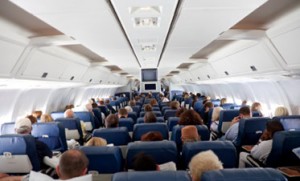Tarmac Delays & Public Safety
According to Time magazine, between January and June 2009, 613 airplanes were delayed on airport tarmacs across the country for more than three hours, during which time passengers were required to stay onboard. In some cases, these delays trapped passengers onboard for up to 11 hours.
In December, the Obama administration released what has been referred to as the “Passenger Bill of Rights” to address this issue.
This new set of regulations, set to go into effect at the end of April 2010, requires domestic airlines to allow passengers on delayed flights to disembark after three hours if it’s safe to do so and if it doesn’t interfere with airport operations. The airlines will be required to provide passengers with food and water within two hours of being delayed on a tarmac. In addition they will be required to maintain useable bathrooms and provide medical attention if needed.
Failure to comply could result in fines of $27,500 per passenger for each violation of the three-hour limit and other government-enforced penalties.
While this new regulation is welcome news to those of us who spend extensive amounts of time traveling by air each year, what does it mean for public safety? Specifically, what does it mean for the public safety communications industry?
Picture this: More than 400 passengers trapped in an aircraft sitting on a tarmac at your local airport for several hours, each armed with a cell phone and confident their rights have been violated by the airline’s actions. Factor into this any level of actual emergency that may occur onboard and the end result will be dozens, if not hundreds, of 9-1-1 calls reporting the incident and requesting authorities to respond and rectify the situation. This has occurred with several of those 600+ occurrences cited earlier. Passengers have called 9-1-1 for assistance during these incidents—some going as far as reporting themselves as kidnapped and even held hostage.
In preparation for receiving these types of calls, comm centers with airports in their jurisdiction or in neighboring jurisdictions should develop policies and procedures for the appropriate response. This preplanning requires the involvement of numerous agencies, including the airport’s authorities and field agencies, as well as some level of legal counsel to assess the level of liability exposure the comm center will experience based on their response. Questions that need to be answered in advance include:
- What agency will be notified when these calls are received (local law enforcement, airport authorities, federal authorities, a combination of all of these, etc.)?
- Will the comm center initiate any type of actual response to the airport for these types of calls (law enforcement to investigate claims, etc.)? Or will notification of the responsible agency suffice as response?
- What parameters will need to be included in a computer-aided dispatch (CAD) system to effectively process these calls?
- How will calls from the outside (media, family members of passengers, etc.) be processed?
There are obviously numerous other questions that will need to be addressed as these plans are developed. The key is to take the time now to develop these plans and procedures as you would any other type of emergency call. As always, planning is key.
About the Author
Bob Smith is APCO International’s director of Strategic Development. Contact him via e-mail at smithr@apcointl.org.


